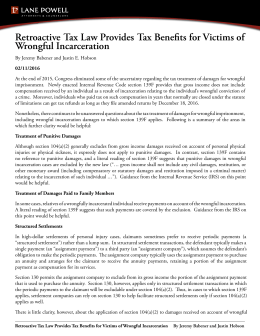

Additionally when a business is passed to the business owner’s heirs. If these business owners choose to sell their business at a price that increases their annual income to exceed $1 million, then they would have to pay higher taxes on the capital gains earned through this sale. Small to medium-sized business owners may also be affected. These changes are targeting higher-income earners. The average American will benefit from a number of tax breaks included within the tax plan. It is important to note here that the tax plan does not propose any changes in the capital gains tax rate for individuals at a lower to middle-income level. How Will These Changes Impact the Average American? Although it is possible, changes will most likely become effective by January 2022. President Biden’s plan has also proposed making the tax changes retroactive to April 2021. The proposed tax law changes would disallow the use of section 1031 for capital gains over $500,000. Under section 1031 investors are able to avoid capital gains tax on proceeds of a property sale if the capital gains are re-invested in another property within 180 days. The American Families Plan would limit a tax break used by real estate investors called section 1031 like-kind exchanges. According to the Joint Committee on Taxation, enforcing this policy would increase tax revenue by $105 billion over a 10-year period.
#RETROACTIVE TAX LAW CHANGES 2021 FULL#
Eliminating the step-up basis will require individuals to pay tax on the full profit earned on the sale of inherited assets. As discussed earlier, the IRS readjusts the value of these assets to match the current market value, allowing heirs to avoid paying or reducing capital gains tax. The Biden tax plan has also proposed eliminating the step-up basis that applies to inherited assets. This step-up basis allows the heir to significantly reduce their tax burden on the sale of the asset. If the heir then sold this asset at $300,000 then as per the readjustment, their capital gain would only be $20,000. When the asset is transferred to its heir, its value gets adjusted to $280,000 to match its current market value. To understand this better let’s consider an example, suppose that the owner of a capital asset originally purchased it for $200,000.

It can be beneficial for tax purposes as it allows the heir to avoid or reduce capital gains tax as per the original purchase price of the asset. This readjustment is known as the step-up basis. However, if the asset was inherited the adjusted basis is the market value of the asset at the time of the owner’s death. Typically the basis is the value at which the asset was purchased. Up to $3,000 of the net capital loss can be deducted from other types of ordinary income.Ī capital gain or loss is calculated by using the “cost basis” or “tax basis” of an asset. For example, if you have a net short-term loss of $7,500 and a net long-term gain of $4,000 then your net capital loss is $3,500.

Then the net loss, either short term or long term, can be deducted against the other type of gain. First capital losses are applied against capital gains of the same type. Capital losses can be used to offset your capital gains. If the current value of the asset is lower than its original purchase price, then you can incur a loss too. Of course, not every capital asset is sold at a profit. This rate is typically lower than the ordinary income tax rate. In the case of long-term capital gains, you are taxed at rates of 0%, 15%, or 20%, depending on your income and filing status. These gains are taxed as per the ordinary income tax rate (10%, 12%, 22%, 24%, 32%, 35% or 37%). Short-term capital gains tax applies to assets that have been held for less than one year. There are two types of capital gains tax that need to be considered, short-term and long-term. A capital asset can include stocks, bonds, investment properties, a business, etc. Capital gains tax is the tax you pay on the profit earned after the sale of a capital asset.


 0 kommentar(er)
0 kommentar(er)
